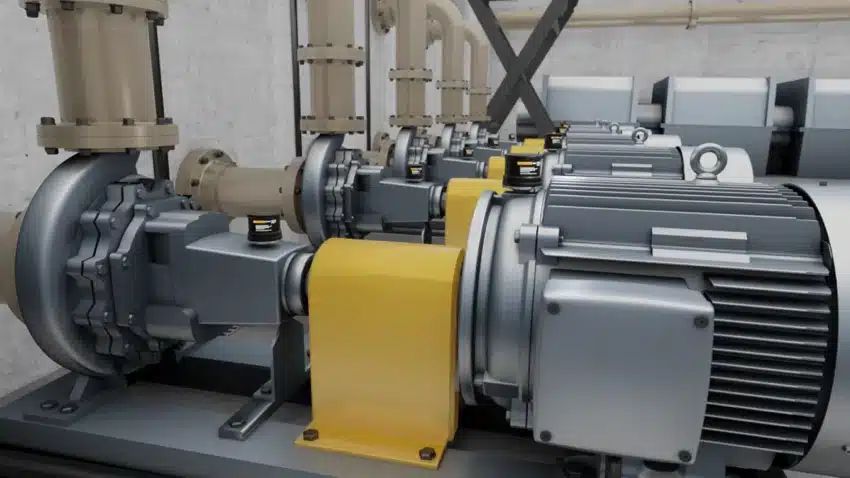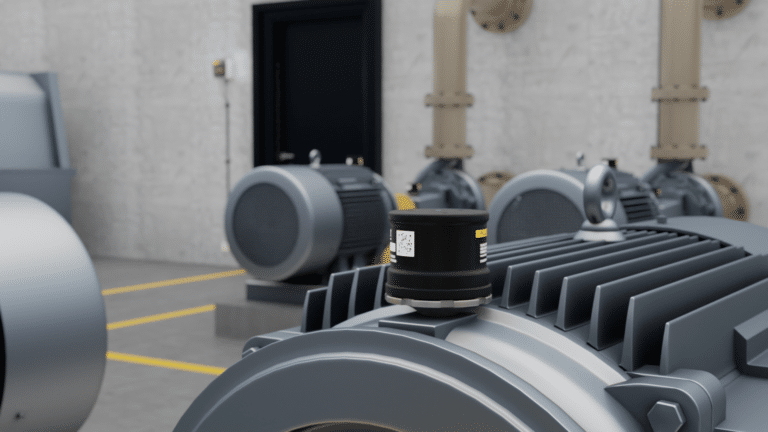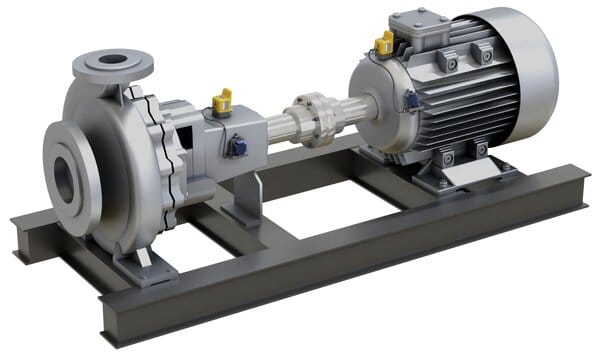
It is normal for machines to vibrate, but a change in a machine’s vibration patterns can indicate potential problems. Measuring changes in vibration patterns helps teams identify imbalance, looseness, misalignment, or bearing wear in equipment — before failure occurs. Abnormal or excessive vibration creates premature wear in components and can shorten asset life. Vibration sensors for motors are mounted on machinery to monitor changes in the amplitude, frequency, and intensity of vibration.
Vibration sensors can pick up information from sources such as structure, resonances, environment, adjacent machines, process, cavitation, and turbulence. Data collected by vibration sensors can be analyzed to identify faults and determine their severity. When maintenance teams know which machines need attention and how urgently they can plan and prioritize their work most effectively.
Technological advances have made vibration sensors more affordable, making them more accessible and scalable as well.
Vibration sensors for motors are common in part because motors are at the transition between electrical and mechanical sources. And while vibration sensors are more focused on mechanical sources, they can screen for some of the electrical sources.
Motors come in a wide range of sizes and are used to drive many different types of equipment. The setting and accessibility of the motor matter, too. With the many types of vibration sensors available, there are options for just about any scenario.
When monitoring a motor driving a large and slow-moving machine, for example, it often makes sense to focus on the displacement or the movement. In this case, a proximity probe is best. Proximity probes are most typically used on large compressors or turbines, especially when turbines are driven by hydro or steam — something other than an electric motor.
MEMS Vibration Sensors
In most cases, though, an accelerometer is more suitable. Today’s vast majority of vibration sensors are accelerometers, which measure acceleration. MEMS sensors are a type of accelerometer, and they are becoming more commonplace because they have high ratings for their frequency response. Many now also have high IP ratings, which refers to how effectively equipment prevents the intrusion of liquids (such as water) or solids (such as dust). MEMS sensors are cost effective and offer long battery life. These traits make them a good choice for screening at scale.
MEMS sensors are suitable for a frequency range of 0 to 1,000 hertz. That lower frequency range is typically where imbalance, misalignment and looseness can be identified.
Piezoelectric Vibration Sensors
Industrial settings can require higher IP ratings, and some settings and applications call for equipment that is intrinsically safe. Intrinsically safe means that something is not capable of causing an explosion. Piezoelectric crystals are impervious to moisture, dust and smoke, making them a common choice for vibration sensors in industrial settings. They are another type of accelerometer.
For higher frequency ranges, those over 1,000 hertz, a piezoelectric sensor should be used. This includes monitoring bearings, compressors and gearboxes. The higher frequency is where issues with gear mesh and motor bars are found.
Wireless Vibration Sensors for Motors
Long battery life is especially beneficial for vibration sensors for motors in hazardous or hard-to-access areas — it reduces the number of trips maintenance technicians need to make. Some sensors require battery replacement as often as every couple of years.
A motor driving a blower may be high enough that accessing it can be dangerous. Some motors driving pumps or compressors are located behind panels, in enclosed rooms or up on roofs. Or motors can be located in areas with hot steam or caustic materials. Remote wireless sensors can be used to monitor such motors, collecting and transmitting vibration data so maintenance teams can stay informed without the time and risk of frequent trips to the motor.
Unique Considerations for Motors
For compound machines, or setups when there are different shafts going different speeds and doing different things, one solution is to use multiple sensors. That can be an especially helpful option for finding faults that are at different frequencies.
Some machines feature many small motors driving small gearboxes on a conveyor, with a large motor driving the main wheel and a belt on the conveyor driving everything. Gearboxes and compressors tend to have faults that fall into the higher frequency ranges, meaning that piezoelectric sensors are recommended over MEMS sensors.
Most motors run at a constant speed most of the time, making vibration monitoring and analysis pretty straightforward. But during the start-up of a motor, the motor goes through a lot of loads and a lot of changes. That can require a more advanced and sensitive vibration sensor and it can require more advanced vibration analysis.
Run-up and coast downs, resonance testing, structure testing, reciprocating motion — this is where vibration analysis can become more complex and require vibration sensors that are up to the task.






